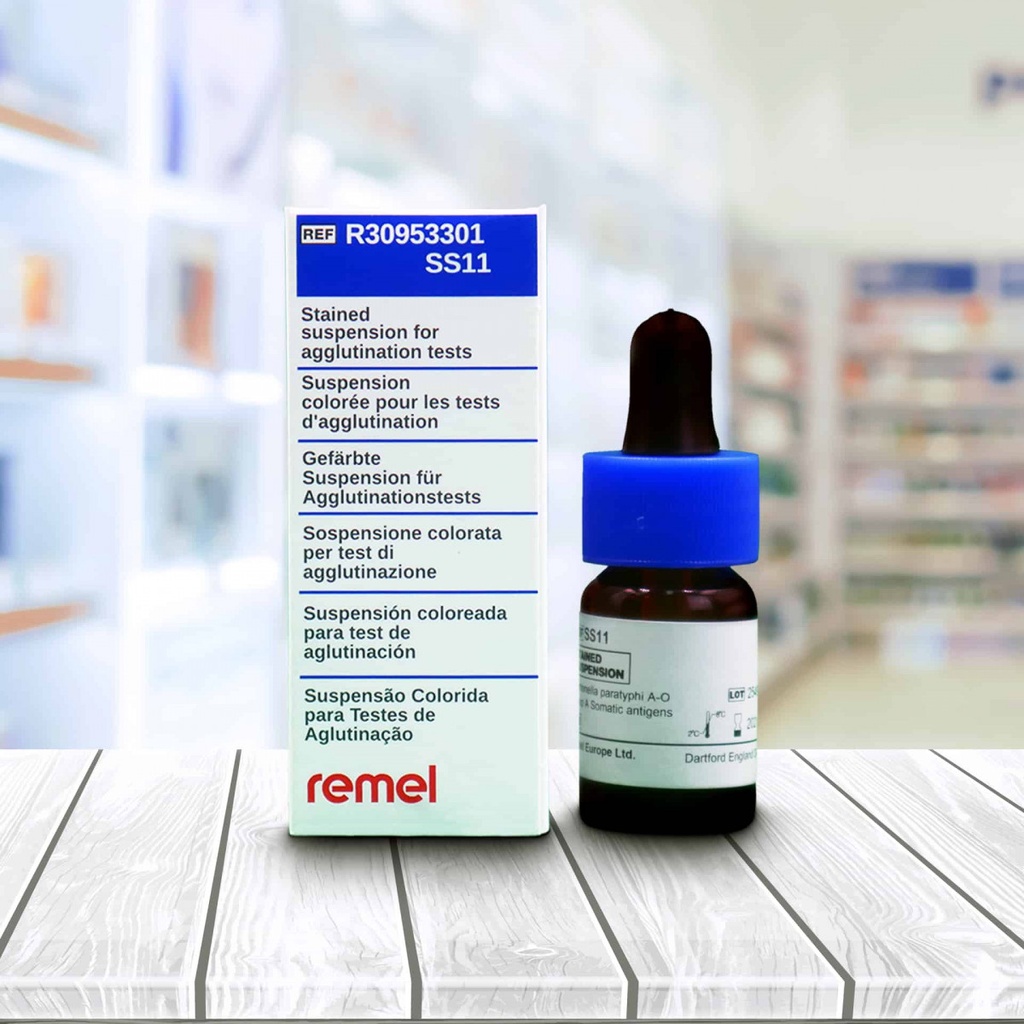Remel™ Shigella dysenteriae Polyvalent (1-10) Agglutinating Sera
Catalog No :
CAS Number :
Brand :
In Stock
Specifications:
| Application | Serology | ||
| Storage Temperature | 2-8°C | ||
| Product Type | Serum | Forms | Liquid |
| Product Brand | Thermo Fisher Scientific™ | Target Organism Class | Shigella dysenteriae |
| Product Grade | Microbiology grade | ||
The Remel™ Shigella dysenteriae Polyvalent (1-10) Agglutinating Sera is a serological diagnostic tool designed for the presumptive identification of Shigella dysenteriae types 1 to 10. It provides visible agglutination results using slide agglutination tests, aiding in epidemiological and clinical diagnostics.
Key Features
- Ready-to-Use Reagents:
- Pre-formulated liquid sera, supplied in 2 mL dropper vials, preserved with 0.5% phenol for immediate use.
- Rapid Results:
- Detects Shigella dysenteriae types 1 to 10 through visible agglutination, offering results within minutes.
- High Specificity:
- Identifies Shigella dysenteriae types while differentiating from non-motile serotypes of E. coli (Alkalescens‑Dispar group).
- Additional differentiation serum available (R30164301).
- Ease of Interpretation:
- Positive results show visible agglutination with S. dysenteriae types 1 to 10.
- Negative controls ensure clear and reliable outcomes.
- Complementary Testing:
- Designed for serological identification; full organism identification requires biochemical testing.
Applications
- Clinical Diagnostics:
- Supports the identification of Shigella dysenteriae in patients suspected of having bacterial dysentery.
- Aids in determining appropriate treatment options.
- Epidemiology:
- Assists in outbreak investigations by identifying Shigella dysenteriae serotypes.
- Tracks transmission and prevalence of Shigella in populations.
- Research:
- Facilitates studies on the classification and serotyping of Shigella dysenteriae.
- Enhances understanding of the antigenic properties of Shigella strains.
Specifications
| Attribute | Details |
|---|---|
| Detectable Analytes | Shigella dysenteriae Types 1–10 |
| Format | Ready-to-use liquid reagents |
| Packaging Type | 2 mL Vial |
| Preservative | 0.5% Phenol |
| Quantity | 2 mL |
| Unit Size | Each |
| Test Type | Slide Agglutination |
| Storage Conditions | 2°C to 8°C |
| CE Marked | Yes |
Intended Use
- For qualitative slide agglutination testing of Shigella dysenteriae isolates grown on agar.
- Assists in the presumptive serological identification of Shigella species as part of a diagnostic workflow.
- Not automated; for professional use only.
Benefits
- Fast and Reliable:
- Provides visible agglutination results quickly, aiding in rapid diagnostic workflows.
- Specific Serotyping:
- Covers Shigella dysenteriae types 1–10, ensuring broad applicability in clinical and research settings.
- Cost-Effective:
- Minimizes delays in serological testing, supporting timely patient management and outbreak investigations.
- Versatile Testing:
- Can be used for clinical, epidemiological, and research purposes.
How It Works
- Sample Preparation:
- Grow Shigella dysenteriae isolates on agar.
- Agglutination Testing:
- Place a drop of the test serum on a clean glass slide.
- Add a small amount of bacterial culture and mix.
- Result Interpretation:
- Positive Result: Visible clumping/agglutination indicates the presence of homologous S. dysenteriae antigens.
- Negative Result: No agglutination indicates absence of homologous antigens.
- Controls:
- Use provided controls to verify reagent performance and result validity.
Storage and Handling
- Store at 2°C to 8°C to maintain reagent stability.
- Ensure reagents are used within their specified shelf life.
Additional Information
- Antigenic Differentiation: Distinguishes Shigella dysenteriae from other bacterial species, including non-motile E. coli serotypes.
- Epidemiological Relevance: Helps identify specific Shigella dysenteriae types involved in outbreaks of bacterial dysentery.
The Remel™ Shigella dysenteriae Polyvalent (1-10) Agglutinating Sera is a reliable, easy-to-use diagnostic tool for rapid serotyping of S. dysenteriae. Its precision, speed, and applicability make it a valuable resource for clinical, epidemiological, and research applications.




 0
0
